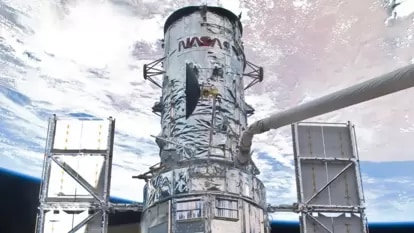NASA SOHO spots CME headed for Earth tomorrow; Solar storm may spark auroras, radio blackouts
NASA’s Solar and Heliospheric Observatory (SOHO) detected a halo CME that is headed for the Earth and may trigger a solar storm tomorrow, November 11. The storm can result in auroras and radio blackouts.


Even with just six Earth-facing active sunspots on the Sun, the solar activity in the last fortnight has been more intense than many months combined this year. This is the second most intense solar storm spell we have seen since March when two G3-class storms were spotted in the same month. To make matters worse, it is not likely to stop anytime soon. The NASA Solar and Heliospheric Observatory (SOHO) has detected a halo-shaped coronal mass ejection (CME) headed towards the Earth. The data highlights that it will make strike the Earth tomorrow, November 11, in the late hours, triggering a solar storm that can be as intense as G2-class.
According to a report by SpaceWeather.com, “Coronagraphs onboard the Solar and Heliospheric Observatory (SOHO) detected a halo CME leaving the sun. It is heading straight for Earth. NOAA and NASA models agree that the CME should arrive during the late hours of Nov. 11th (UT), bringing a chance of G2-class geomagnetic storms”. You can check a video of the CME here.
Solar storm expected to hit tomorrow
So, what can be expected from a G2-class storm? As per experts, A G2-class geomagnetic storm can spark auroras in the high to mid-latitude regions, cause air drag for smaller satellites that are either being launched or revolving in the lower Earth orbit, and spark short-wave radio blackouts that can affect mariners, drone pilots, and emergency responders.
However, it should also be noted that these are the potential risks with a solar storm of this intensity and not a guarantee that these will show up. The accurate assessment of the solar storm is only possible after it has struck the Earth, however, NASA and the National Oceanic and Atmospheric Administration (NOAA) are keeping an eye on it in case there are any further developments.
How NASA SOHO watches the Sun
NASA's SOHO is a satellite that was launched on December 2, 1995. It is a joint project between NASA and the European Space Agency (ESA) to study the sun, its atmosphere, and its effects on the solar system. Equipped with 12 scientific instruments, such as an Extreme Ultraviolet Imaging Telescope (EIT), Michelson Doppler Imager (MDI), LASCO (Large Angle and Spectrometric Coronagraph), and others, SOHO captures images of the sun's corona, measures the velocity and magnetic fields of the sun's surface, and observes the faint corona around the sun.
Catch all the Latest Tech News, Mobile News, Laptop News, Gaming news, Wearables News , How To News, also keep up with us on Whatsapp channel,Twitter, Facebook, Google News, and Instagram. For our latest videos, subscribe to our YouTube channel.
































